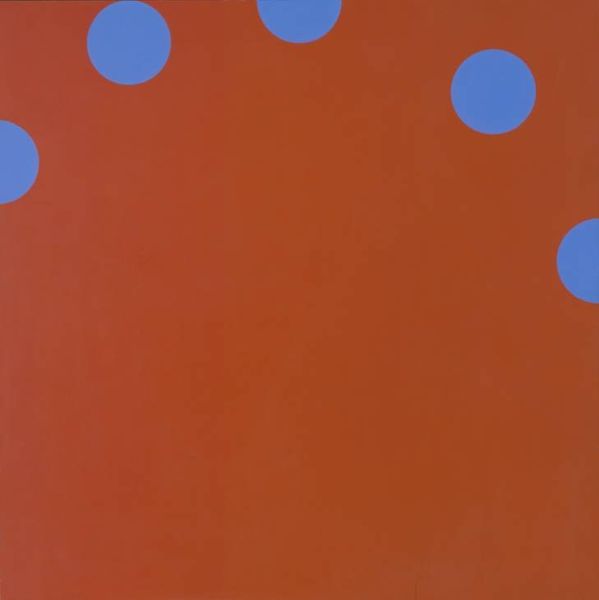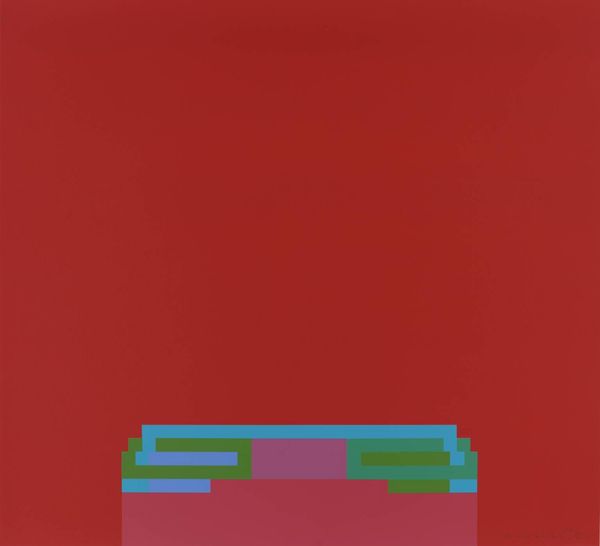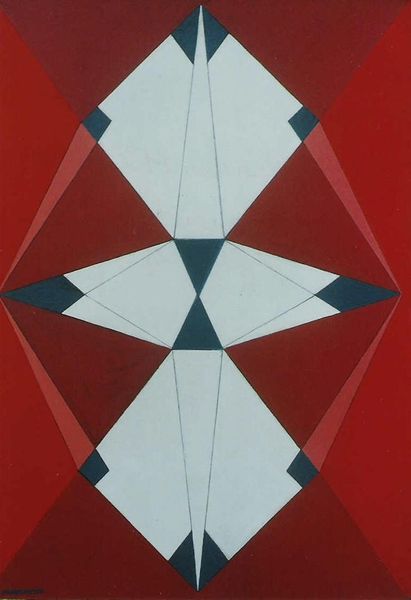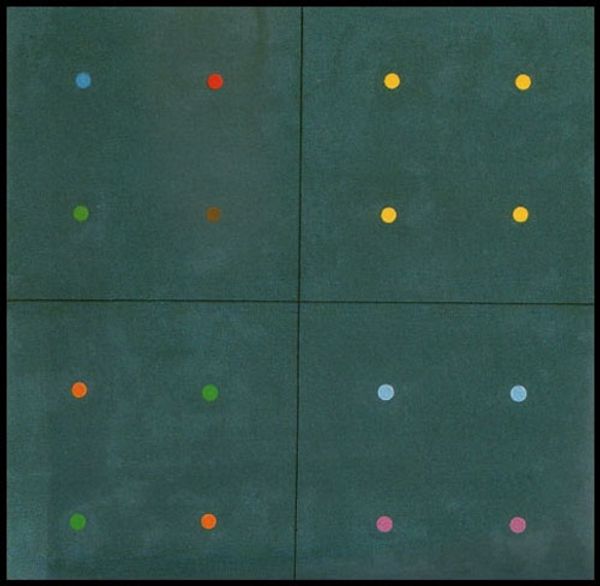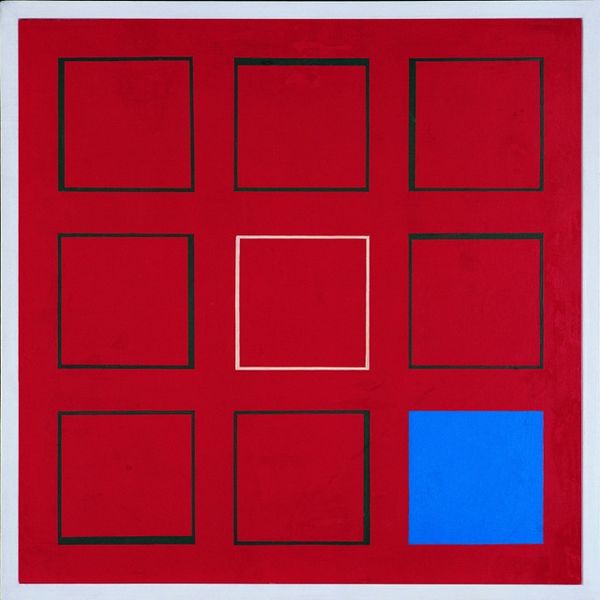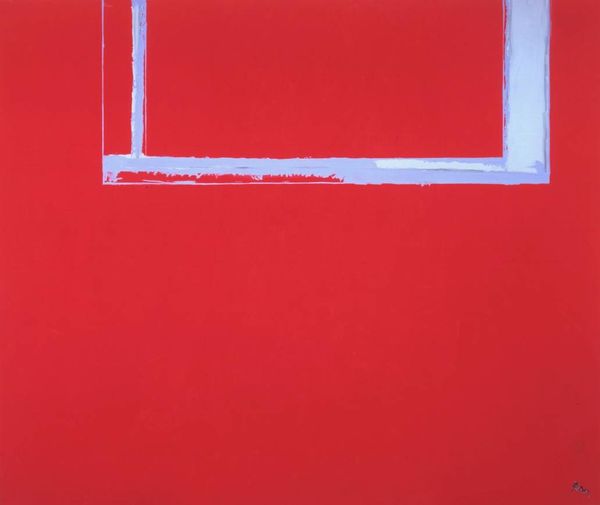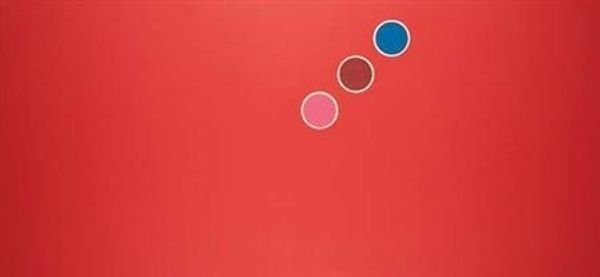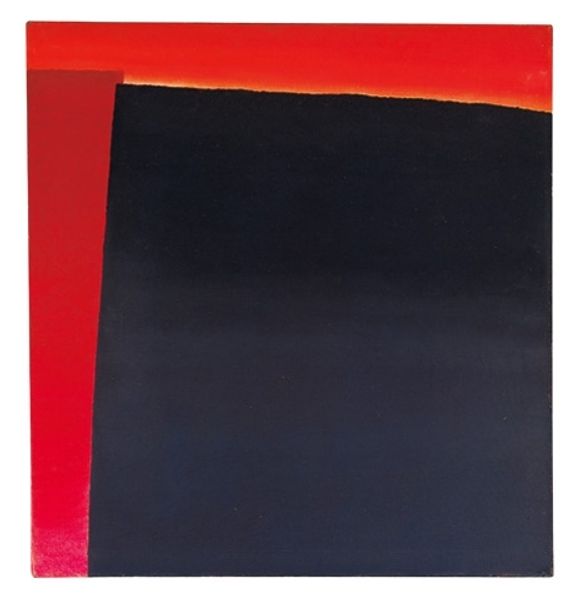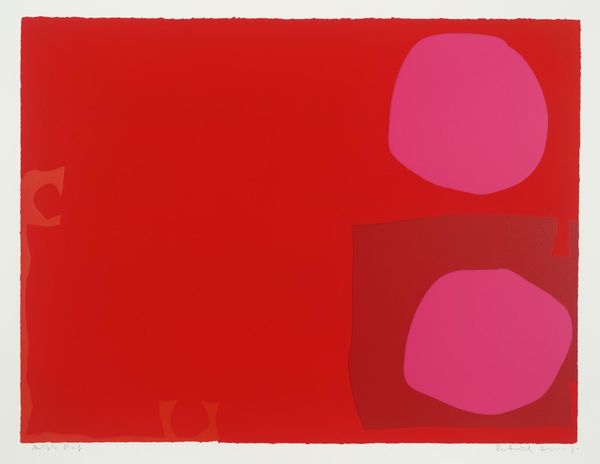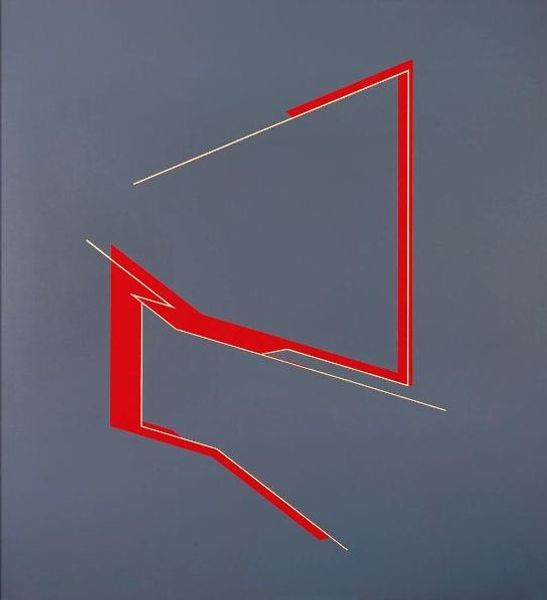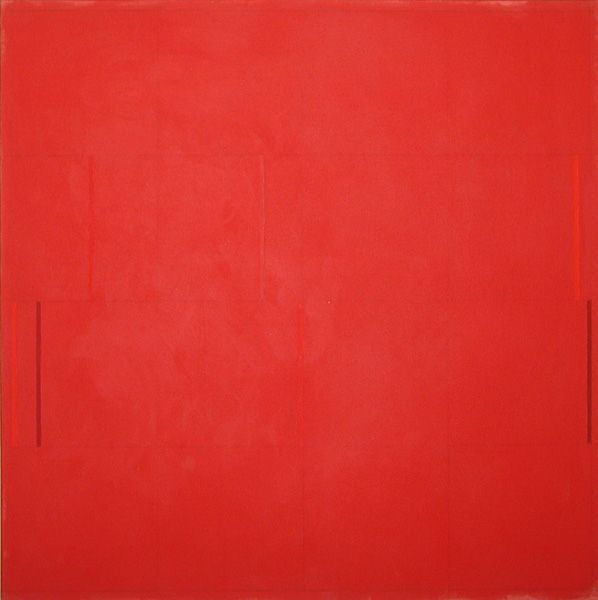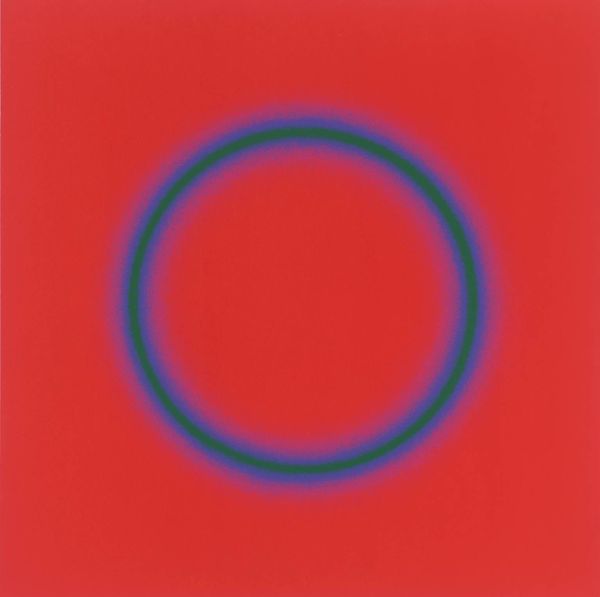
acrylic-paint
#
colour-field-painting
#
acrylic-paint
#
abstract pattern
#
geometric
#
abstract-art
#
abstraction
#
abstract art
#
modernism
#
hard-edge-painting
Copyright: Yves Gaucher,Fair Use
Curator: This is Yves Gaucher’s "Square Dance: Blues for Green," created in 1964. Gaucher was a significant figure in Canadian modernism, known for his exploration of colour-field painting and hard-edge abstraction. Here, he uses acrylic paint on canvas to create this striking composition. Editor: It strikes me immediately as…restrained. Despite the vibrant red, the overall effect feels calm and deliberate. The arrangement of those geometric shapes, those squares and diamond forms, has a very controlled energy. Curator: The title, "Square Dance," suggests movement, even choreography. Yet, the composition feels remarkably still. What do you make of this apparent contradiction? Editor: I think it hints at the rigidity often imposed by social structures, including dance itself. The blues within the title also invoke African American music that evolved into freedom songs to protest historical oppression and the rigid dance movements within European or European settler-colonized contexts. While on first look, this might appear to be non-representational, the colors used within geometric shapes bring forward the possibility of cultural codes. Curator: I appreciate your interpretation through an African American lens. Speaking from an iconographic perspective, I'd also argue it's about simplification, of reducing form to its essence. The square and diamond are age-old symbols, associated with earth and spirit, brought down to almost playful arrangements. This visual "dance" becomes a symbolic interaction of universal forces. Editor: But how can we separate the universal from the specific histories and power dynamics that inform our understanding of those symbols? What makes Gaucher's squares, in their careful, deliberate arrangement, distinctly Canadian, distinctly of 1964, a year of major Civil Rights reform and upheaval within and beyond the borders of America and Canada? The squares feel flat, maybe even two-dimensional in how this abstracts the potential historical impact of art on viewers who encountered them. Curator: Perhaps it is this tension—between the universal and the specific, between order and freedom—that gives the work its lasting power. It serves as a minimalist container, to speak plainly, filled with meaning by each person who gazes upon its red expanse. Editor: Absolutely, and acknowledging that the red and blues themselves have embedded social and political meanings which resonate beyond purely formalistic interpretation. This is not an empty, albeit well-crafted vessel. It echoes with histories of resistance and change.
Comments
No comments
Be the first to comment and join the conversation on the ultimate creative platform.
